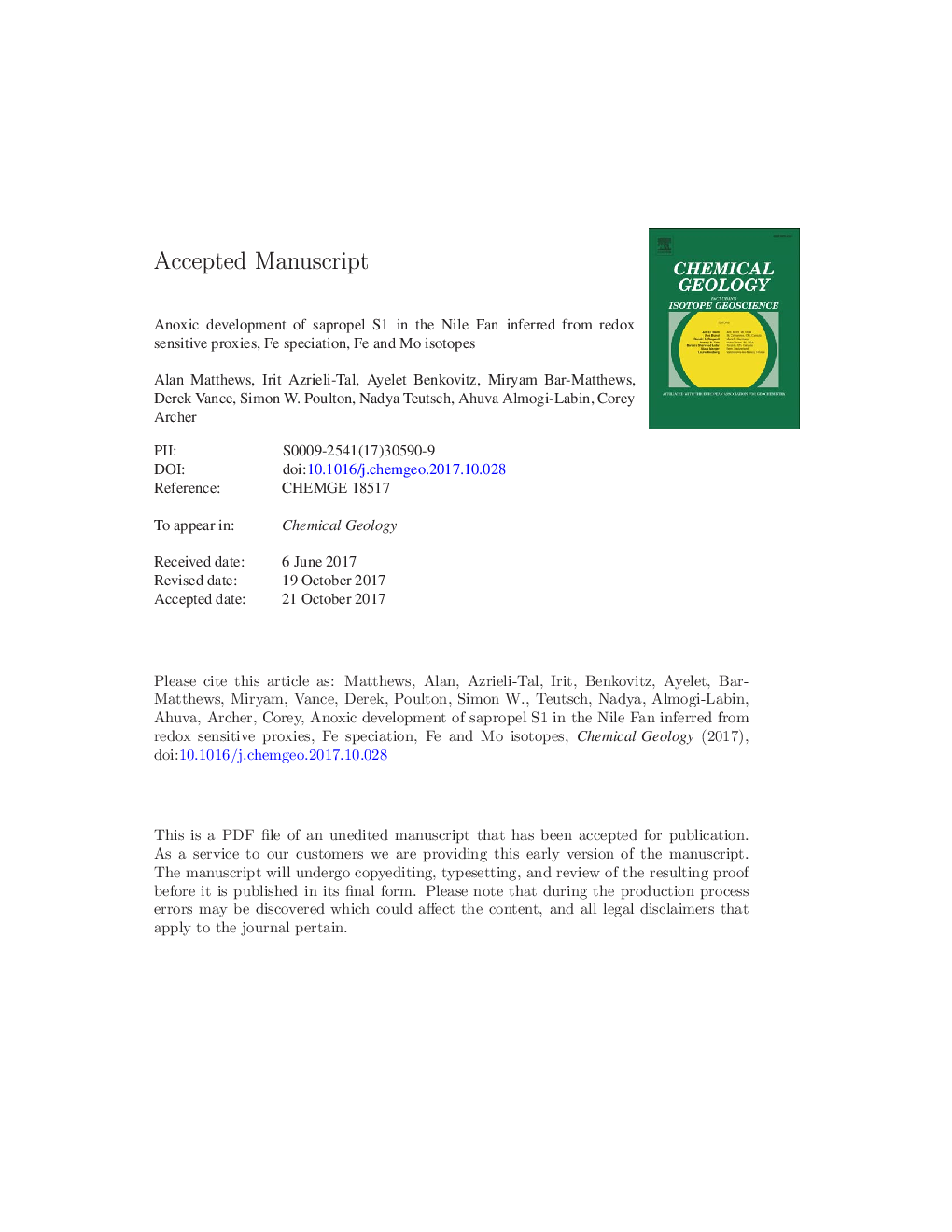| Article ID | Journal | Published Year | Pages | File Type |
|---|---|---|---|---|
| 8910497 | Chemical Geology | 2017 | 50 Pages |
Abstract
The MoEF vs. UEF enrichment factor variations in core 9509 infer a transition from open marine suboxic conditions in the enclosing non-sapropel sediments to anoxic non-sulphidic water column conditions in the sapropel. Correspondingly, the highly reactive Fe pool (FeHR) measured in Fe speciation studies is dominated by Fe(oxyhydr) oxide minerals in the background sediments, whereas pyrite (Fepy) becomes the dominant component of the FeHR pool in the sapropel. Maximum Fepy values in the sapropel coincide with peak productivity and reducing conditions, implying a clear link between trace element uptake, diagenetic bacterial sulphate reduction in anoxic porewater and Fe mobilization in the sapropel. Iron isotope compositions (δ56Fe) in the sapropel do not show any departure from primary (marine and detrital) source sediment values, and the absence of an Fe/Al vs. δ56Fe trend strongly argues against an Fe shuttle. Molybdenum isotopes, however, show marked non-conservative fractionation patterns. Background sediment δ98/95Mo values (0.2 to 0.7â°) are compatible with fractionation upon absorptive uptake by Fe (oxyhydr)oxides and pyrite. In contrast, minimum δ98/95Mo values exhibited at peak sapropel (reducing and pyrite producing) conditions are most closely modeled by Mo isotope fractionation during kinetically controlled conversion of aqueous molybdate to thiomolybdate species. The conservative Fe isotope behavior/Mo isotope fractionation minima in the sapropel may be a characteristic of organic-rich sediment diagenesis below an anoxic non-sulphidic water body, without the operation of a benthic Fe shuttle.
Keywords
Related Topics
Physical Sciences and Engineering
Earth and Planetary Sciences
Geochemistry and Petrology
Authors
Alan Matthews, Irit Azrieli-Tal, Ayelet Benkovitz, Miryam Bar-Matthews, Derek Vance, Simon W. Poulton, Nadya Teutsch, Ahuva Almogi-Labin, Corey Archer,
